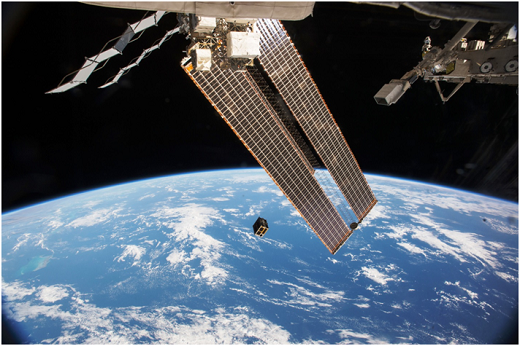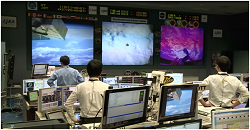This is an archive of information released in the past.
Disclaimer: It may contain broken links or outdated information. Some parts may not function in current web browsers.
*Visit https://humans-in-space.jaxa.jp/en/ for the latest information.

Kibo-ABC Member Countries' News: Philippines and Japan
Successful Deployment of the Philippines' first microsatellite "DIWATA-1" from the Kibo/ISS

DIWATA-1, the first Philippine-made satellite was successfully deployed from the "Kibo" in ISS on April 27, 2016. Also this was the first attempt to deploy a 50kg class satellite from the Kibo.
The DIWATA-1 was developed as part of the Department of Science and Technology's Philippine Scientific Earth Observation Micro-Satellite (PHL-Microsat) Program. This program sent nine engineers and students from the Department of Science and Technology -- Advanced Science and Technology Institute (DOST-ASTI) and the University of the Philippines to two Japanese universities, Tohoku University and Hokkaido University to learn satellite development.
DIWATA-1 was handed-over to JAXA on January 13, 2016. Then it was installed to the JEM Small Satellite Orbital Deployer (J-SSOD) and delivered to the ISS by U.S. commercial cargo vehicle "Cygnus" which was launched from the Kennedy Space Center in Florida on March 22. The J-SSOD was installed to the JEM Airlock by the ISS crew/Jeffrey Williams as preparation of the deployment on April 21.
After that the J-SSOD was transferred outside the Kibo through the JEM Airlock and grappled by the JEM Remote Manipulator System (JEM RMS) to move the J-SSOD to its deployment position. The JEM RMS operations were conducted by ISS crew/ Tim Peake and the JEM Flight Controller Team (JFCT) in the MCR/SSIPC. As the "DIWATA" is female fairy, J-Flight Ms.Yurika Nakano led JCOM Ms.Sakurako Takahashi and JFCT, they issued the deployment command to the J-SSOD. DIWATA-1 was released successfully on April 27, 2016. The project members of the DOST-ASTI, the University of Philippines, Tohoku University and Hokkaido University watched the deployment at the MCR in the Tsukuba Space Center of JAXA.
DIWATA-1 has four optical sensors to provide satellite images of environmental resource monitoring and meteorological applications to the nation of 100 million people for the first time.
The Philippines is now hoping to produce its own satellite upon the success of DIWATA-1, to become a member of space developing countries. Currently, DIWATA-2 is being developed and will be delivered to space in the near future. With that, the establishment of a national space agency along with practical space development program is in process and will benefit the country.

| Copyright 2007 Japan Aerospace Exploration Agency | Site Policy |



